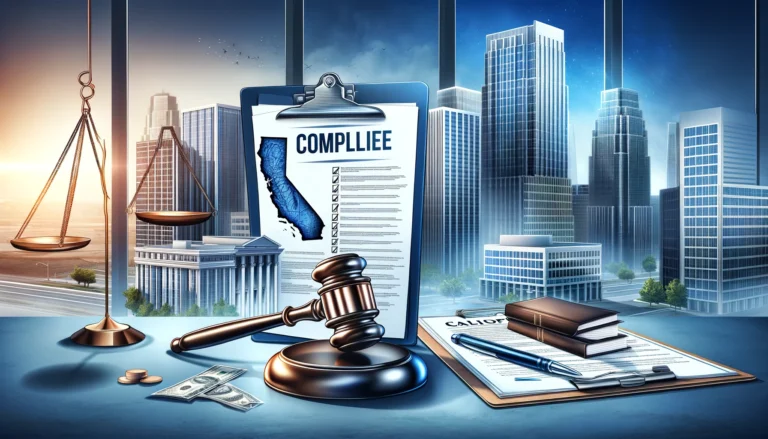Introduction
Understanding the intricacies of property sales processes is crucial for property owners, investors, and legal professionals alike. Two significant processes in real estate transactions are partition sales and foreclosure sales, each with its distinct characteristics and implications. A partition sale occurs when co-owners of a property, typically with disputes or conflicting interests, seek to sell the property and divide the proceeds among themselves. On the other hand, a foreclosure sale is initiated by a mortgage lender when a borrower defaults on their mortgage payments, leading to the sale of the property to recover the outstanding debt.
The significance of comprehending the differences between these processes cannot be overstated, as they involve complex legal frameworks, financial considerations, and potential implications for all parties involved. While both types of sales involve the transfer of property ownership through a sale, the underlying circumstances, legal procedures, and distribution of proceeds vary significantly between partition sales and foreclosure sales.
This comprehensive exploration aims to elucidate the nuanced disparities between partition sales and foreclosure sales, providing clarity on their respective initiation processes, sale procedures, distribution of proceeds, and legal implications. By delving into the intricacies of these processes, property owners, investors, and legal professionals can navigate real estate transactions with greater insight and understanding, thereby mitigating risks and maximizing opportunities in the dynamic landscape of property sales.
Partition Sale Process
Partition sales, stemming from disputes or conflicting interests among co-owners of a property, necessitate a meticulous legal process and equitable distribution of proceeds.
Definition and Purpose
A partition sale is a legal process through which co-owners of a property resolve disputes or conflicting interests by selling the property and dividing the proceeds among themselves. The primary purpose of a partition sale is to provide a fair and efficient mechanism for resolving disputes over jointly owned property, ensuring that each co-owner receives a proportionate share of the property’s value.
Initiation of the Sale
The initiation of a partition sale often arises from disagreements among co-owners regarding the use, management, or disposition of the property. Common scenarios include disagreements over maintenance responsibilities, usage rights, or financial obligations associated with the property. To initiate a partition sale, one or more co-owners typically file a petition with the court, seeking legal intervention to facilitate the sale and equitable distribution of proceeds among the co-owners.
Sale Procedure
Once the petition for partition sale is filed, the court intervenes to oversee the sale process and ensure fairness and transparency. The court may appoint a neutral third party, such as a trustee or commissioner, to manage the sale proceedings, including the appraisal, marketing, and auction of the property. Appraisal and valuation of the property are crucial steps in determining the fair market value, which serves as the basis for the sale price. Subsequently, the appointed trustee or commissioner orchestrates the marketing and advertising of the property to attract potential buyers. The sale itself typically involves a public auction or bidding process, with the highest bidder acquiring the property subject to court approval.
Distribution of Proceeds
Upon the completion of the sale, the proceeds are distributed among the co-owners in accordance with the court’s order. The distribution follows a predetermined hierarchy, prioritizing the repayment of debts, expenses incurred during the sale process, and finally, the equitable distribution of remaining proceeds among the co-owners. This ensures that each co-owner receives a fair share of the property’s value, reflecting their respective ownership interests and contributions.
In essence, the partition sale process provides a legal framework for resolving disputes among co-owners, facilitating the orderly disposition of jointly owned property, and ensuring equitable distribution of proceeds. By adhering to established legal procedures and principles of fairness, partition sales offer a viable solution for resolving complex property disputes and safeguarding the rights of co-owners.
Foreclosure Sale Process
Foreclosure sales, initiated by mortgage lenders following borrower default, entail a structured legal process aimed at recovering outstanding debts through the sale of the property.
Definition and Purpose
A foreclosure sale is a legal process through which a mortgage lender exercises its rights to sell a property following the borrower’s default on mortgage payments. The primary purpose of foreclosure sales is for the lender to recoup the outstanding debt owed by the borrower, typically resulting from missed mortgage payments or breach of loan terms. Foreclosure sales serve as a mechanism for mortgage lenders to mitigate financial losses associated with defaulted loans and reclaim collateral in the form of the property securing the mortgage.
Initiation of the Sale
The initiation of a foreclosure sale occurs when a borrower fails to fulfill their mortgage obligations, such as making timely payments or complying with loan terms. Upon default, the mortgage lender issues a notice of default to the borrower, formally notifying them of the breach and initiating foreclosure proceedings. The notice of default typically triggers a statutory waiting period, during which the borrower may have the opportunity to cure the default by making overdue payments or negotiating with the lender. If the default remains unresolved within the stipulated timeframe, the lender proceeds with foreclosure proceedings, culminating in the sale of the property through a public auction or trustee sale.
Sale Procedure
Foreclosure sales are conducted through public auctions or trustee sales, wherein the property is sold to the highest bidder, subject to certain legal requirements and procedures. The sale process is governed by state laws and regulations, which dictate the specific timelines, notice requirements, and auction procedures. Prior to the sale, the lender is required to provide public notice of the foreclosure auction, typically through newspaper advertisements or postings at the property and courthouse. The auction itself involves competitive bidding among potential buyers, with the property going to the highest bidder. Following the sale, the winning bidder receives a trustee’s deed or sheriff’s deed, transferring ownership of the property.
Distribution of Proceeds
The proceeds from a foreclosure sale are used to satisfy the outstanding debt owed by the borrower, including the unpaid principal balance, accrued interest, and any associated fees or expenses incurred during the foreclosure process. The distribution of proceeds follows a predetermined hierarchy, prioritizing the repayment of the mortgage debt and associated expenses. If the sale proceeds exceed the amount owed to the lender, the surplus funds may be distributed to junior lienholders or, in some cases, to the borrower as surplus proceeds. However, if the sale proceeds are insufficient to cover the outstanding debt, the lender may pursue other legal remedies to recover the remaining balance.
In summary, foreclosure sales provide mortgage lenders with a legal mechanism to recover outstanding debts by selling properties secured by defaulted loans. Through a structured sale process governed by state laws, foreclosure sales aim to maximize proceeds while ensuring equitable treatment of borrowers and lienholders. Understanding the foreclosure sale process is essential for borrowers facing financial difficulties and for investors seeking opportunities in distressed real estate markets.
Key Differences Between Partition and Foreclosure Sales
Partition sales and foreclosure sales diverge significantly in their underlying legal basis, initiation processes, sale procedures, and distribution of proceeds.
Legal Basis
Partition sales are rooted in disputes or conflicting interests among co-owners of a property, necessitating the sale and equitable distribution of proceeds to resolve ownership disputes. In contrast, foreclosure sales are initiated by mortgage lenders following borrower default on mortgage payments, aiming to recover outstanding debts secured by the property.
Initiation Process
The initiation process for partition sales involves one or more co-owners filing a petition with the court, seeking legal intervention to facilitate the sale of the property and equitable distribution of proceeds among the co-owners. On the other hand, foreclosure sales are initiated by mortgage lenders through the issuance of a notice of default to the borrower, triggering foreclosure proceedings to recover the outstanding debt owed by the borrower.
Sale Procedure
Partition sales entail court oversight and involvement throughout the sale process, including the appointment of a trustee or commissioner to manage the sale proceedings, appraisal of the property, marketing and advertising, and ultimately, the auction or sale of the property. In contrast, foreclosure sales are typically conducted through public auctions or trustee sales, governed by state laws and regulations dictating the notice requirements, auction procedures, and distribution of sale proceeds.
Distribution of Proceeds
The distribution of proceeds from partition sales prioritizes the repayment of debts, expenses incurred during the sale process, and equitable distribution of remaining proceeds among the co-owners, reflecting their respective ownership interests and contributions. Conversely, foreclosure sales prioritize the repayment of the outstanding mortgage debt owed by the borrower, including unpaid principal balance, accrued interest, and associated fees and expenses incurred during the foreclosure process. Any surplus proceeds from the foreclosure sale may be distributed to junior lienholders or the borrower, while insufficient proceeds may prompt the lender to pursue other legal remedies to recover the remaining balance.
In essence, the key differences between partition and foreclosure sales lie in their legal basis, initiation processes, sale procedures, and distribution of proceeds. Understanding these distinctions is essential for property owners, investors, and legal professionals navigating real estate transactions and resolving property disputes effectively.
Conclusion
In conclusion, the disparities between partition sales and foreclosure sales underscore the importance of understanding the nuances of each process for property owners, investors, and legal professionals.
Recap of Key Differences
Partition sales arise from disputes among co-owners, necessitating a court-supervised sale to resolve ownership conflicts and distribute proceeds equitably. In contrast, foreclosure sales are initiated by mortgage lenders following borrower default, aiming to recover outstanding debts secured by the property through a structured sale process.
Importance of Understanding Processes
Comprehending the intricacies of partition and foreclosure sales is crucial for property owners facing disputes or financial difficulties, as well as for investors seeking opportunities in distressed real estate markets. By understanding the initiation processes, sale procedures, and distribution of proceeds associated with each type of sale, stakeholders can make informed decisions and navigate real estate transactions effectively.
Implications for Legal Rights and Financial Outcomes
The differences between partition and foreclosure sales have significant implications for legal rights and financial outcomes. Property owners involved in partition sales must navigate complex legal procedures and ensure equitable distribution of proceeds among co-owners. Similarly, borrowers facing foreclosure must understand their rights and options throughout the foreclosure process to mitigate financial losses and protect their interests.
By grasping the distinctions between partition and foreclosure sales, stakeholders can leverage their understanding to safeguard their legal rights, maximize financial outcomes, and navigate real estate transactions with confidence. Whether resolving ownership disputes or mitigating foreclosure risks, informed decision-making is paramount in achieving favorable outcomes in the dynamic landscape of property sales.





